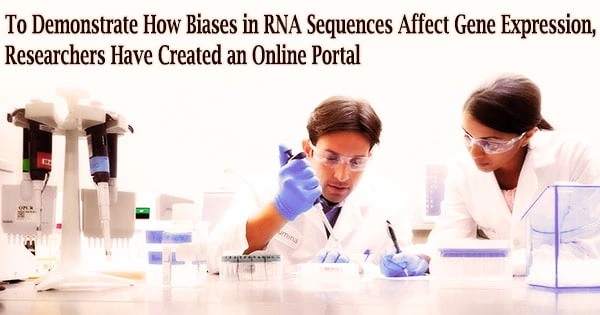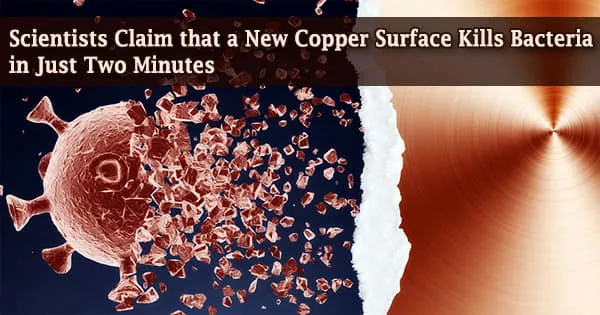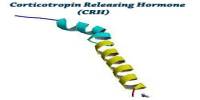The significance of detecting and comprehending how variations between tissues and cells influence gene expression without changing the underlying genetic code is discussed in a recent study from University of Kentucky researchers.
DNA is transcribed into RNA, which is then translated into proteins, according to what is taught in introductory biology courses. However, transcription and translation rates depend on a variety of biological processes. It is possible to determine which genes are active in a tissue or cell by examining the variations in RNA concentrations inside that tissue or cell.
“Changes in gene expression can significantly affect various diseases and disease trajectories,” said Justin Miller, Ph.D., assistant professor in the UK College of Medicine’s Department of Pathology and Laboratory Medicine.
The first algorithm to discover ramp sequences from a single gene sequence was created, according to Miller, who is also connected to the Sanders-Brown Center on Aging and Biomedical Informatics.
Miller and fellow UK scientists Mark Ebbert, Ph.D., and Matthew Hodgman have demonstrated that ramp sequences differ between tissues and cells without altering the RNA sequence by developing an online version of that technique.
A ramp sequence is a portion of the RNA sequence that uses difficult-to-translate codons (sequences of three DNA or RNA nucleotides) to impede translation at the start of the gene. By evenly distributing the translational machinery and preventing collisions later in translation, ramp sequences counterintuitively improve overall gene expression.
The researchers report more than 3,000 genes with ramp sequences that vary between tissues and cell types in their most recent publication in NAR Genomics and Bioinformatics, which corresponds with higher gene expression in those tissues and cells. They also present the first thorough analysis of tissue- and cell-type-specific ramp sequences.
We created an online interface for researchers to query all human genes and see if a specific gene has a ramp sequence in a given tissue and how that gene is expressed within that tissue. We also show that various COVID-19 genes and human entry factors for COVID-19 have ramp sequences that change between different tissues. Ramp sequences are much more likely to occur in tissues where the virus is known to proliferate.
Justin Miller
“This research is the first time that variable ramp sequences have been described. Our comprehensive web interface allows other researchers to creatively explore ramp sequences and gene expression,” said Miller.
The research team claims that despite the fact that our RNA can encode the same proteins in numerous ways, the precise RNA sequence is crucial for controlling the quantities of both RNA and protein.
“Essentially, a ramp sequence works like an on-ramp to a freeway so that ribosomes do not crash into each other, but the length and speed limit of that onramp can change depending on the cell and the available resources within that cell,” Miller explained.
He claims that he loved working on this project not only with his UK colleagues but also with his brother Kyle Miller at Utah Valley University and his former colleagues at Brigham Young University.
The team developed an online tool that allows users to view how ramp sequences relate to the expression of COVID-19 and human genes in various tissues and cell types. According to Miller, this effort will eventually have an effect on patient treatment.
“We created an online interface for researchers to query all human genes and see if a specific gene has a ramp sequence in a given tissue and how that gene is expressed within that tissue,” said Miller. “We also show that various COVID-19 genes and human entry factors for COVID-19 have ramp sequences that change between different tissues. Ramp sequences are much more likely to occur in tissues where the virus is known to proliferate.”
Because of this, scientists think that COVID-19 genes feature genetic biases (ramp sequences) that enable them to utilize the cellular machinery at their disposal to raise their expression.
“Our research may help us better predict which tissues and cells new viruses will infect and also provides a potential therapeutic target to regulate tissue-specific gene expression without changing the translated protein,” said Miller.
The National Institute on Aging of the National Institutes of Health under Awards Numbers P30AG072946 and R01AG068331 and the National Institute of General Medical Sciences of the National Institutes of Health under Award Number R35GM138636 funded the research that was the subject of this publication.
The writers alone are responsible for the material, which does not always reflect the official viewpoints of the National Institutes of Health. This work was also funded by the BrightFocus Foundation, under awards A2020118F and A2020161S, and the Alzheimer’s Association, under award 2019-AARG-644082.
















